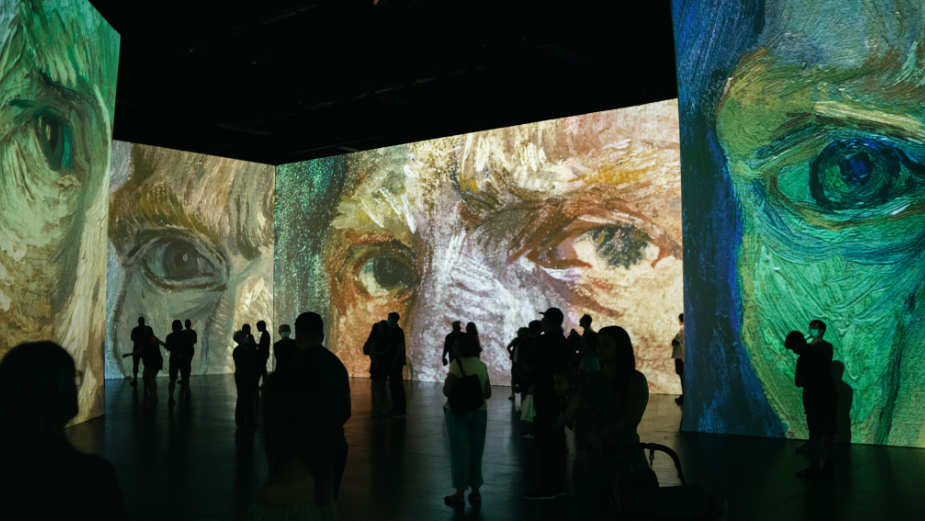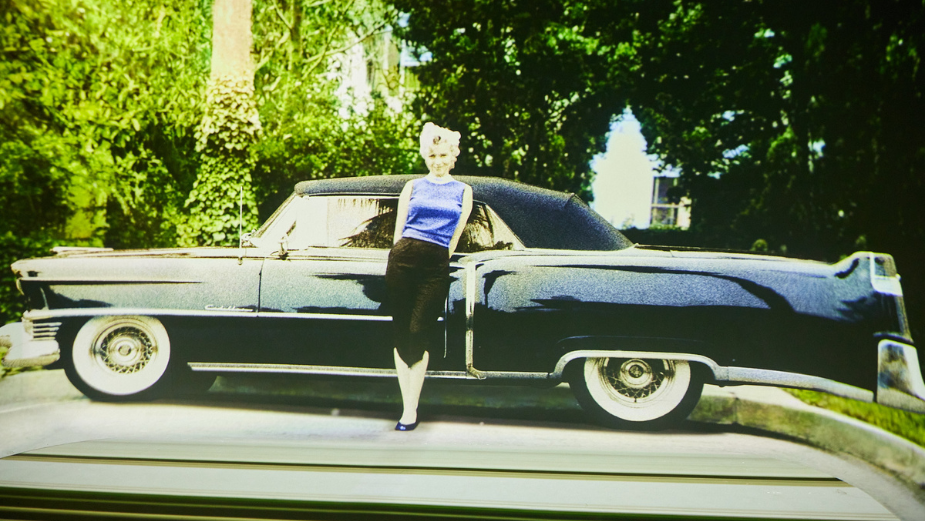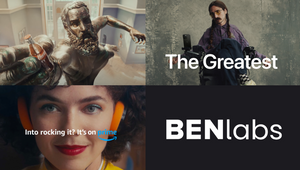
Immersive Experiences Are Here to Stay – Is Your Brand Ready?

It is harder than ever to hold someone’s attention in 2023 – and advertisers know this best. We seek out new experiences and in-person interactivity. We crave heightened, multi-sensory immersion. We need to be shocked into submission. Given the fiercely competitive and highly saturated digital landscape, the average consumer has very high expectations which are reflected in the growing demand for immersive experiences. But what are consumers responding to?
Many of the most successful immersive experiences have transported audiences back in time to experience the alternate realities of Icons of history. The promise of total immersion in the world of Van Gogh, Salvador Dali, Frida Kahlo and Gustav Klimt has proven to be an unmissable opportunity for millions around the globe – and BENlabs’ believe this presents the industry with all new commercial prospects.
As the global leader in rights clearance and merchandise licensing, BENlabs’ pioneering work in the immersive experience space include partnerships with advertisers and brands, whereby the company clears the licensing rights of Iconic talent from history – from Elvis to Einstein. Having been involved in earlier iterations of the brand exhibition format, such as Le Grand Numero de Chanel which shows that brands can often create exhibitions to promote their product offers, BENlabs considers the exhibition space and, in particular, the immersive experience trend to be emblematic of modern consumer needs.
Here, Brenda Conway, BENlabs’ senior client manager of rights services, touches on the opportunities that have presented themselves as a result of these experiential events and the company’s crucial involvement in the clearance of associated artwork, film and talent licensing.
LBB> The popularity of immersive installations and experiences has grown exponentially in recent years; from sophisticated new-media installations to animated retrospectives of Impressionist painters. What do you think is driving audiences to engage with immersive experiences of Icons from history?
Brenda> There is a genuine desire to blend technology with culture, attracting visitors seeking innovative multisensory approaches to familiar and new content. Museums and galleries can be intimidating for some potential visitors. Therefore, offering "immersive" experiences aligns better with their typical screen-based viewing habits and provides a more accessible way to appreciate iconic artworks. Consistent visitor numbers for the international Dali and Van Gogh exhibitions show this is the case, with new shows such as a Magritte Immersive experience coming soon to London.

LBB> In 2018, New York Times critic Amanda Hess spent ‘pop up’ experiences across the city, concluding that “the real experience on offer was posting to social media.” In what ways have you seen social media influence the success of and increase the demand for immersive experiences?
Brenda> For me, this is an integral part of the immersive 360-degree experience, extending the reach of content beyond the physical venue of the show. Visitors seek to share their visual and auditory experiences with those who cannot join them in person, creating a form of outreach that broadens the show's audience. This, in turn, generates additional exposure through free social media publicity. For exhibition rights holders, it presents an opportunity to expand the perception of the intellectual property in the eyes of visitors and enhance their interaction with it.
Take, for instance, the Dali exhibition. Alongside immersing visitors in Dali's poetic and dreamlike visual world, the organisers commissioned a soundtrack by Rafael Plana, introducing another layer of sensory engagement. However, the success of such exhibitions doesn't solely hinge on sensory experiences. While visitors are immediately captivated by the large-scale projected imagery and can fully immerse themselves in Dali's world through interactive installations, holograms, and virtual reality, what truly stands out is the exhibition's core theme.
Dali, renowned for his artistic brilliance and eccentric personality, saw the organisers' decision to emphasise his scientific mindset as a key factor in attracting crowds to the exhibition. If the exhibition had solely focused on his art, a path previously explored, it wouldn't have exerted the same magnetic appeal.
LBB> Are you utilising any new technologies to facilitate the rights licensing process associated with immersive experiences?
Brenda> The licensing process is the same for immersive experiences. However, what is changing is the expansive list of media now available to both advertisers and brands, who can also look at offering an immersive experience to their clients when selling their product.
For example, we recently worked with Cadillac to create an immersive pop-up touring exhibition, as part of their new electric vehicles sales drive. The exhibition included imagery of BENlabs icons Marilyn Monroe, Muhammad Ali and Elvis Presley with the Cadlillacs they owned, and visitors were walked through the history of Cadillac via an interactive display of images and videos. Being able to bring iconic photographs to life captures the attention and delivers an unforgettable experience for the guests.

LBB> What are some of the key differences in the licensing of artwork, film and talent for immersive experiences?
Brenda> The main difference is guiding the rights holders to accept this new form of manipulation of their content. Particularly with artistic works, the spirit of the original work needs to come through as well as the intentions of the artist. This also goes for film and our partners at the studios who are the rights holders of the original material. We work with them to ensure that licensees do not stray from the original intent, whilst having the ability to manipulate the clips as required, all signed off by the rights holder of course.
A key benefit to talent being involved in these projects is that they can collaborate closely with the creative process and so recreate their own image of how they want to be seen. For deceased talent, we are finding that deep fakes, CGI recreations or holograms are a popular direction within these experiences, and recreations of their likenesses are strictly controlled by the estates in question.
LBB> What are some of the challenges associated with licensing needs for these types of projects?
Brenda> One of the primary challenges stems from the constant evolution of technology. What lies ahead in the future? Will rights holders comprehend and accept these evolving uses of their content? Our role is to collaborate closely with show creators, comprehensively grasp their needs, and then offer guidance on whether the proposed use of the content aligns with acceptability. As an AI-based company, we are committed to staying abreast of emerging trends in the tech world and anticipating the next major developments.
LBB> What industries have you seen benefit from immersive experiences most and why do you think this is?
Brenda> The licensing industry has benefited from the rise of immersive experiences, as this has produced a new line of business. Many of the immersive experiences have been done with museum and gallery content and aimed at this visitor type, and so the heritage sector has gained as a knock-on effect from the popularity of these immersive shows, some of which work together in museum and gallery venues, some of which are in stand alone venues. This additional exposure of art and heritage in turn creates a greater audience for permanent gallery offerings. But immersive exhibitions have also been created for popular characters, such as Le Petit Prince, which had immersive exhibitions in Dubai & Turkey (Story of Friendship light show) and Hong Kong (Journey to the Universe: 80 years of the Little Prince). Using illustrated characters is a great vehicle for a show, there is generally lots of original content to play with, and creating new or manipulated character content is easier than with film content.
LBB> How do you see your role in connection to creativity and the execution of creative immersive experiences featuring iconic brands and talent?
Brenda> We want to continue to provide a fast, reactive service to our agency and brand clients. And this means being able to offer advice from experience of working on immersive experiences and having the knowledge to help them licence the creative they need to produce future-forward experiences. As well as this, our role is to assist our rights holders in understanding the new requirements these experiences may need them to give permission to, which could be much wider than in the past for traditional campaigns.













